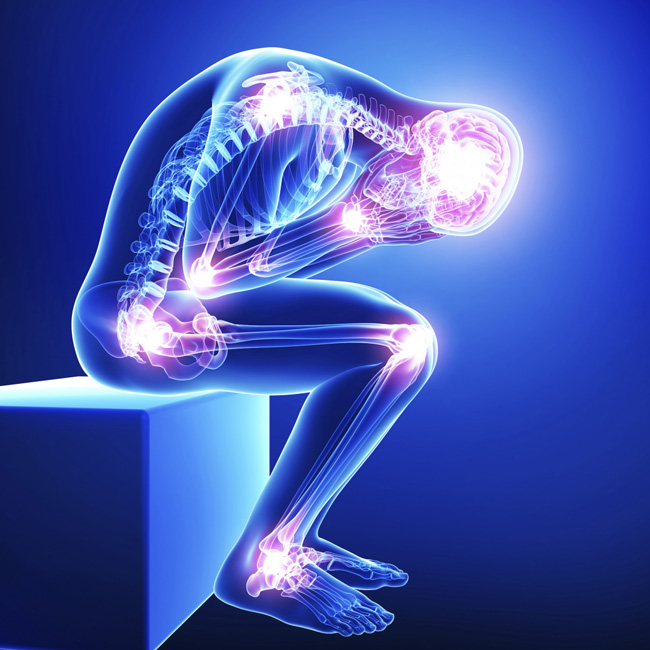The Value, Importance, and Oversight of Clinical Research
Guidelines Development
Under the leadership of Dr. Stavros Memtsuoudis (US) and Dr. Chung, the team worked with other anesthesia experts to develop guidelines on the intraoperative management of surgical patients with sleep apnea. The guidelines were published in Anesthesia & Analgesia in Nov. 2018.
Dr. Jean Wong and Dr. Chung led world-leading perioperative physicians, surgeons and pharmacists to develop the Society for Peri-operative Assessment and Quality Improvement Consensus Statement on Peri-operative Smoking Cessation. It was published by Anesthesia & Analgesia in 2019.

The Obstructive Sleep Apnea Death and Near Miss Registry
Peri-operative death and near death due to sleep apnea are rare events. Dr. Chung and Dr. Norman Bolden (US) in the Society of Anesthesia and Sleep Medicine, together with Dr. Karen Posner (US) at the Anesthesia Quality Institute, launched "The Obstructive Sleep Apnea Death and Near Miss Registry" in North America in the past few years. The goal of the registry is to identify peri-operative recurring patterns or themes underlying death or adverse events related to sleep apnea, with the ultimate aim of risk prevention and improved patient safety. They found that death or severe brain damage associated with obstructive sleep apnea (OSA) was more common in the hospital ward or home, locations with little or no respiratory monitoring.
Rescue from OSA-related critical events was more commonly successful in post-anesthesia care unites (PACUs), intensive care units (ICUs), or step-down units, and locations with higher level monitoring. Effective monitoring solutions for the ward and home could potentially reduce perioperative adverse outcomes associated with OSA. Use of CPAP also provides benefits.
The preliminary results from the Society of Anesthesia and Sleep Medicine OSA Registry was chosen as one of the "Best of Abstracts: Clinical Science" at the American Society of Anesthesiologist Annual Meeting, San Francisco, California, Oct 2018. The manuscript has been submitted to Anesth Analg Journal.


Obstructive Sleep Apnea and Surgery
Globally, 100 million people are estimated to have OSA, and 80-90 percent of individuals with moderate to severe OSA remain undiagnosed. Worldwide, 250 million major surgical procedures are undertaken annually. Ample opportunities exist for the identification of OSA and the establishment of a new standard of care for these patients. The STOP-Bang tool is a "game-changer" that has helped Dr. Chung and her colleagues to identify the serious risks associated with sleep-apnea patients who undergo anesthesia and surgery. The team has pushed forward the science of sleep medicine and anesthesia in screening, preparation, intra-operative management and treatment with CPAP.
In the general population, OSA is associated with a higher risk of cardiovascular adverse events. For most patients who present for surgery, there is insufficient time to perform detailed sleep studies. Therefore, a large proportion of patients with sleep apnea are unrecognized and untreated. We want to determine whether sleep apnea would pose an increased risk to surgical patients for adverse cardiovascular events.
Dr. Chung and her colleagues undertook a prospective cohort study that involved adult at-risk patients without a prior diagnosis of sleep apnea who were undergoing major non-cardiac surgery from eight hospitals in five countries. The study showed that two thirds of patients had unrecognized sleep apnea, and about one in 10 patients had severe sleep apnea. They also showed that patients with severe sleep apnea were at 2-fold higher risk of postoperative cardiac complications. Thus, in adults undergoing major non-cardiac surgery, unrecognized severe OSA was significantly associated with increased risk of 30-day post-operative cardiovascular complications.
In May 2019, the study was published in JAMA. These results set the stage for further studies that will identify interventions that can modify this risk.
https://www.ncbi.nlm.nih.gov/pubmed/31087023


Sleep Apnea and Chronic Pain
In North America, seven percent of adults had reported using a prescription opioid analgesic in the past 30 days. Approximately 70 per cent of patients taking opioids for chronic pain may have sleep-breathing disorders, such as OSA and central sleep apnea. Pain experts have identified sleep apnea as one of the root causes of opioid-related death. Early identification and treatment of sleep apnea in such patients could improve their safety, enhance their quality of life and, most importantly, may reduce the risk of death. However, identifying which patients on opioids for chronic pain might be at risk for sleep apnea is not currently routine practice.
Dr. Chung's team has developed an innovative sleep apnea algorithm that integrates the STOP-Bang questionnaire, and the resting oxyhemoglobin saturation to determine the risk of sleep apnea in chronic pain patients taking opioids. This is a new, cost-effective, universally applicable tool that can lead to improved patient safety, expanded knowledge and enhanced quality of care. The novel work has been published in BMJ Open Resp Dec 2019.
Education of pain physicians and family physicians is important to bring an increase in awareness of the potentially dangerous link between narcotics and central apnea. Addressing this issue, Dr. Chung's team embarking on a project to determine the results of diagnosing and treating these chronic pain patients with undiagnosed sleep apnea, obstructive or central.


Sleep Health in Chronic Pain Patients
There is evidence to indicate that a bidirectional relationship between sleep and pain exists. Pain disrupts sleep, sleep disturbances exacerbate pain, and the majority of chronic pain patients have sleep disturbances. Improving sleep health in chronic pain patients is a relatively new therapeutic angle. Sleep is an important predictor of pain, and sleep education may have benefits beyond sleep in chronic pain patients. Sleep education has been proven to significantly improve sleep health in a variety of populations, and more research is needed to determine whether it can have positive effects in both sleep and quality of life in the chronic pain population. Consequently, Dr. Chung's team is starting a study focusing on the effects of sleep education to improve sleep health and pain.

Obstructive Sleep Apnea and Dementia
Approximately 5.3 million Americans have Alzheimer's disease. It is estimated that 43 percent of men and 27 percent of women aged 50-70 years have OSA. OSA is an independent risk factor for stroke and cognitive impairment. CPAP has been shown to be partially effective in reversing the changes in brain morphology associated with OSA, leading to improved cognitive function. Post-operative delirium is a common distressing problem in elderly patients following surgery and increases their risk for other serious complications, including death. Patients with OSA are shown to be at greater risk to develop post-operative delirium.
Unrecognized OSA may be a treatable cause of post-operative delirium. Screening for OSA in elderly patients with cognitive dysfunction, dementia and/or post-operative delirium is an area that Dr. Wong, a collaborator, and Dr. Chung are working on. The goal is to raise awareness of family physicians, specialists in internal medicine, geriatricians that elderly with cognitive dysfunction and dementia may have a treatable cause of sleep apnea.
The team has finished a multi-centre, randomized controlled trial where 220 patients with newly diagnosed and untreated OSA were randomized to auto-titrating positive airway pressure or standard care after surgery. The primary outcome was occurrence of postoperative delirium. The group is now analyzing the data for this study and will be preparing a manuscript for publication.

